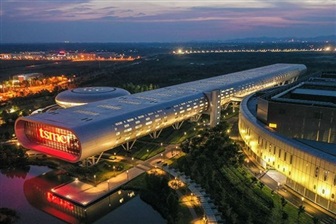South Korean prosecutors have charged ten individuals over an alleged large-scale leak of 10nm-class DRAM process technology from Samsung Electronics to China's leading memory maker ChangXin Memory Technologies (CXMT), a case authorities say directly enabled China's first mass production of advanced DRAM in 2023.
Gallium nitride power devices are rapidly penetrating AI data centers as soaring electricity demand forces operators to rethink power efficiency and density. The shift is pushing US and European power semiconductor suppliers to accelerate partnerships and product development.
Nvidia has agreed to buy key assets from AI accelerator startup Groq in the company's largest acquisition to date, a move that underscores how the battle in artificial intelligence is increasingly shifting from training dominance toward inference efficiency and cost control.
Japanese semiconductor equipment giant Tokyo Electron Limited (TEL) announced on December 24, that it will launch a major organizational restructuring and executive management reshuffle in early 2026. As part of the changes, Hikaru Ito, chairman of Tokyo Electron Taiwan, and president Roger Chang will be reassigned to new roles. Tatsuya Nagakubo will assume the position of chairman, while Seiji Nakama will take over as president.
A Japanese startup originating from Waseda University, Power Diamond Systems (PDS), showcased its diamond-based semiconductors at SEMICON Japan 2025, presenting for the first time an evaluation system that confirmed the devices' operation after packaging.
As the global memory market enters its sharpest price upswing in nearly five years, one top-tier PC maker has moved quickly to lock in supply, dispatching senior executives to negotiate directly with major memory producers, including Samsung Electronics, SK Hynix, and Micron Technology.
Taiwan-based IC substrate maker Unimicron recently announced that it will sublease part of its Taichung Dajia land and factory to its flexible PCB (FPCB) subsidiary Uniflex Technology. The move addresses overseas customers' non-China production requirements.
On December 23, 2025, Softstar Entertainment held an extraordinary shareholders' meeting to approve its official name change to Star Fusion Group, signaling a decisive transformation into a technology- and energy-focused conglomerate. Chairman David Tu said the group now employs around 3,600 people across 11 subsidiaries and more than 30 affiliated companies, spanning gaming, semiconductors, cybersecurity, dining, third-party payments, and heavy electrical equipment.
Deloitte Taiwan released a report on December 23, 2025, highlighting that AI has moved beyond proof of concept to large-scale commercial deployment, rapidly expanding across core areas such as smart manufacturing, generative content, personalized marketing, and integration with 5G/6G and edge computing. Notably, advances in agentic AI are becoming a major driver of industrial growth. Taiwan continues to hold a critical position as a global node for AI and semiconductors.
Taiwan's Ministry of Economic Affairs (MOEA) announced on December 23, 2025, that export orders from the US reached US$28.45 billion in November 2025, up 12.5% sequentially and 56.1% year-over-year. Orders for information and communications products, focused on artificial intelligence (AI) servers, rose by US$6.43 billion, marking a sharp year-over-year increase of 117.7%.
China's leading foundry, SMIC, is reported to have issued price increase notices to selected customers, marking the start of a pricing adjustment. The company has yet to formally confirm the move.
More coverage



